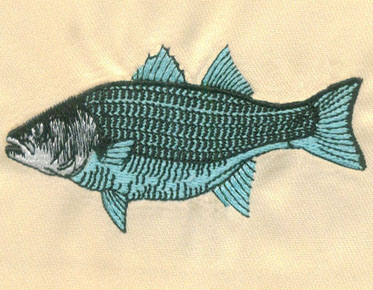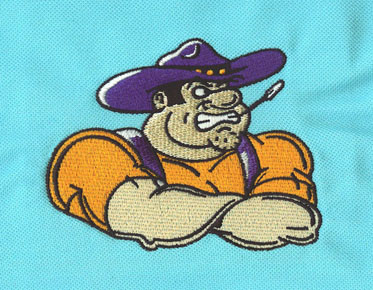Embroidery Vs Screen Printing–The Ultimate Comparison
Selecting the right embroidery digitizing technique is an essential part of the creation of your custom clothing. Embroidery digitizing and screen printing can be customized, but the way you create them is different. Here, we'll discuss the fundamentals of each process to help you decide which is the most appropriate for your project.
Are you a die-hard embroidery fan who loves
the handcrafted look? Or do you prefer the clean, crisp lines and solid colors
of screen printing? Maybe you haven't decided yet! The truth is, both methods
have their advantages and disadvantages. One might be perfect for your needs,
while the other proves to be a disaster. Are you a die-hard embroidery fan who
loves the handcrafted look? Or do you prefer the clean, crisp lines and solid
colors of screen printing? Maybe you haven't decided yet! The truth is, both
methods have their advantages and disadvantages. One might be perfect for your
needs, while the other proves to be a disaster.
What is screen printing and embroidery?
Embroidery is the process of decorating a fabric with designs and patterns through needles and threads. These designs are made by using threads of different colors to create pictures or patterns. With this printing method, you can use many different materials such as cotton, various cottons, wool, polyester, tweed, leather, etc. Embroidery is used to make school shirts and other garments that cannot be sewn or sewn.
Screen printing is a printing process in which ink is pushed through a mesh net onto the fabric being printed. The inks used in screen printing are fairly thick and very opaque. Screen printing is great because it allows more flexibility in your designs. Using this method, you can print multiple colors on a single piece of clothing by using color separation techniques or discharge methods.
With screen printing, you can also use many different materials such as polyester, cotton, wool, silk, etc. Unlike the thicker inks used in screen printing, these inks are thinner and can be mixed to create gradients and patterns.
What is the difference between embroidery and screen printing?
Both screen printing and embroidery use fabric to create custom designs. The fabric you choose will determine the cost of your design. For example, if you are working with a very thick piece of fabric, you may have to hire more workers and may take longer to complete the design. The thinner the fabric, the cheaper the price. The thicker and heavier the fabric, the more expensive it is.
The time consumption
Compared to screen printing, embroidery is a more time-consuming process. Screen printing takes less time because you can only use one color. This process uses only one color ink that is a solid color in the design and cannot mix different colors. Embroidery can use a variety of colors and gradients to create the picture or design you want with multiple threads of different colors and materials.
Cost
The final product of embroidery is more expensive because it involves a lot of handwork and details, unlike silkscreen printing. During this process, many workers will be involved with the embroidery machine by creating designs on the machine to be sewn. Another advantage of embroidery is that it is more flexible and can be printed on any type of fabric or garment. With screen printing, you can only print on certain materials such as textiles and plastics.
Flexibility
Embroidery involves the use of multiple colors and threads. When using screen printing, you will only be using one color ink. Screen printing is a simple process that requires very few workers, but it is not as flexible as embroidery. Often, screen-printed garments can only be made in one color. For example, a shirt might not have two different colors on the same shirt, or a T-shirt might not have two different colors of stripes.
Embroidery is often considered a better printing method because it can produce different colors and patterns. With silkscreen printing, you simply print one color ink on a solid color background. However, both are great options when you need custom clothing, like a uniform.
Embroidery
or screen printing, how to choose the right method?
Both embroidery and screen printing have advantages and disadvantages that must be considered when deciding which technique to use for a custom design. There are some questions you can ask yourself to help choose the right approach for your specific needs.
Is
the design simple or complex?
If the design is simple and requires only one or two colors, then screen printing may be the right choice. A good example is a simple logo with just one color and a little detail. Screen printing is a quick way to create designs using only one color ink. If you are a uniformed businessman, silkscreened garments will be much less expensive than embroidered uniforms.
Embroidery is one of the best options if you want to create designs with more detail and more color. With this print format, it becomes easier to add more color and detail.
Whichever method you use, you can style it
in any type of garment, including shirts, jackets, and aprons, for merchants or
chefs. Either way you can make custom garments and have them delivered to you.
How
much are you willing to spend?
Embroidery is a more expensive option than screen printing. Embroidery will cost more to design because it requires more detail and costs more per garment.
Screen printing costs less because the process involved with this printing method is simpler and less detailed. Screen printing is also more flexible than embroidery as you can order custom garments in any color, size and design.
Can
you find the right worker?
Screen printing is a simple process that requires only one worker. However, you will be limited to one color of ink and what can be printed using this method. One thing about screen printing is that it is great for uniform printing for merchants who are wearing uniforms like shirts or jackets.
On the other hand, embroidery involves more handwork and details than screen printing. So you will need multiple workers to complete the job. This method is more suitable for small businesses that need custom clothing.
If you have a business, you can use embroidery and screen printing to personalize your garments and overall look. By choosing the right method based on your needs and budget, you will be able to create custom garments at great prices. You can add your logo to items like shirts, jackets or aprons to give as a prize or as a gift to a loyal customer or employee.
When deciding which of these processes to use, the best thing to do is to ask yourself some questions about how you plan to use the custom garment you want to create. Saying this on a uniform for a worker or a cook, for example, might be important to one person and something else to another. You can answer these questions and decide which method works best for you, then decide which printing method to use.
The choice is yours! There are many different printing methods, and both embroidery and screen printing are great options for creating custom garments. Before deciding which method to use for your custom clothing project, consider all the pros and cons of each process.
Does
embroidery last longer than screen printing?
The time it takes to create a custom garment may vary depending on the type of garment you choose. However, embroidery will last longer than screen printing. For example, a shirt takes longer to make because it has more lines and details involved in making it. Embroidery on a dozen shirts took longer than screen printing because of all the different colors used in their construction.
However, you should also consider how much
each method will wear on the garment before ordering. You should take this into
consideration when designing your design. If you see that the embroidery on the
shirt wears out faster than the screen printed shirt, and the print doesn't
last that long, then you should consider getting a new design with the
embroidery.



